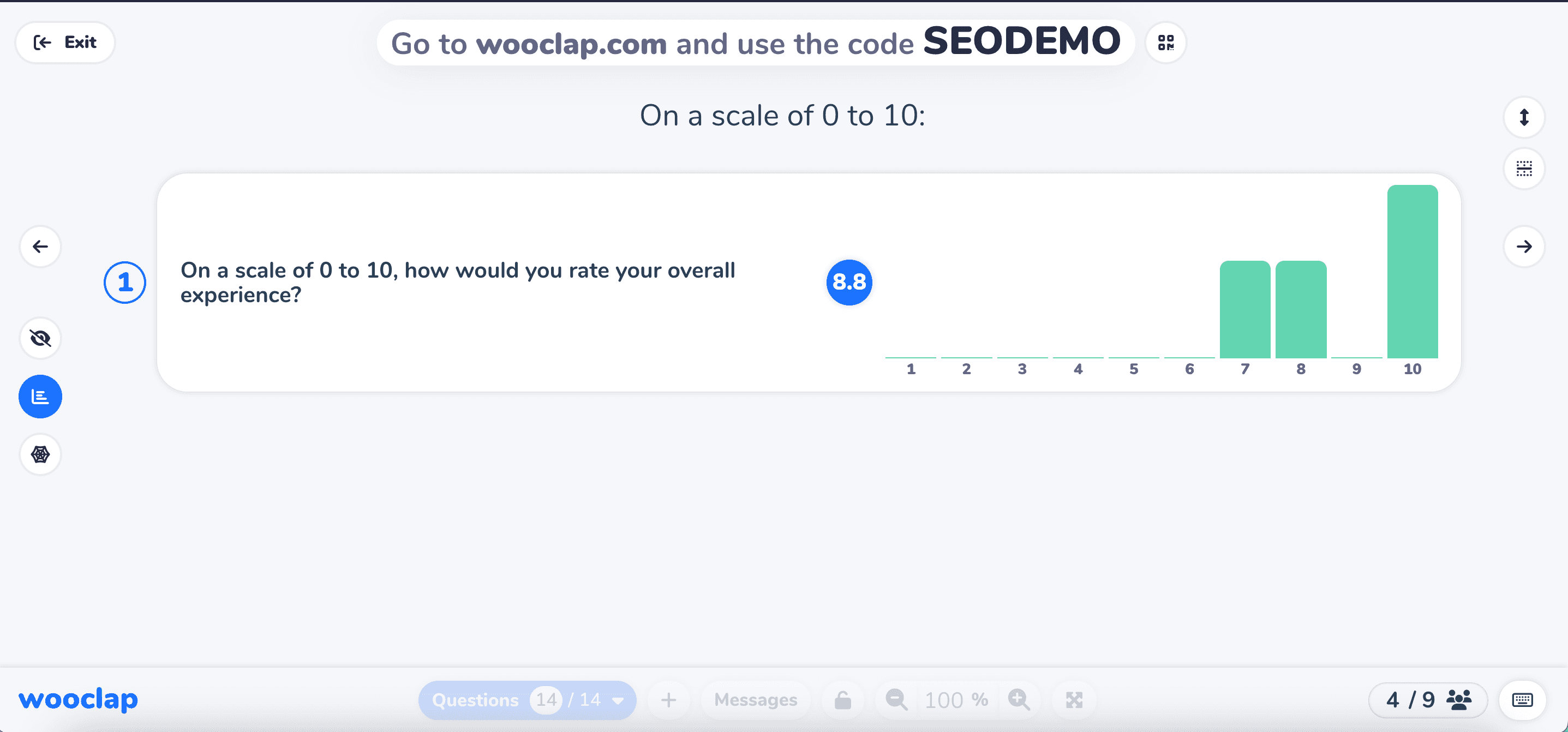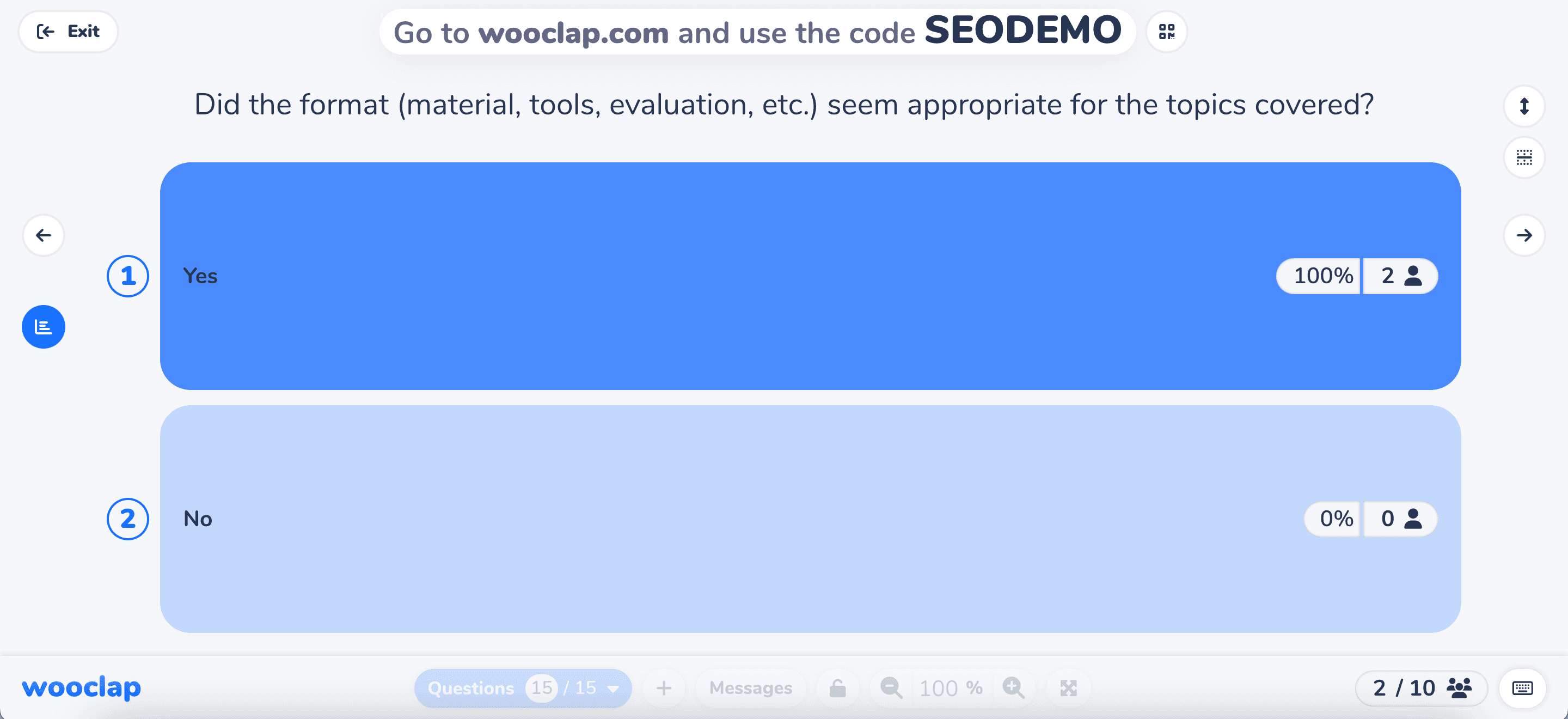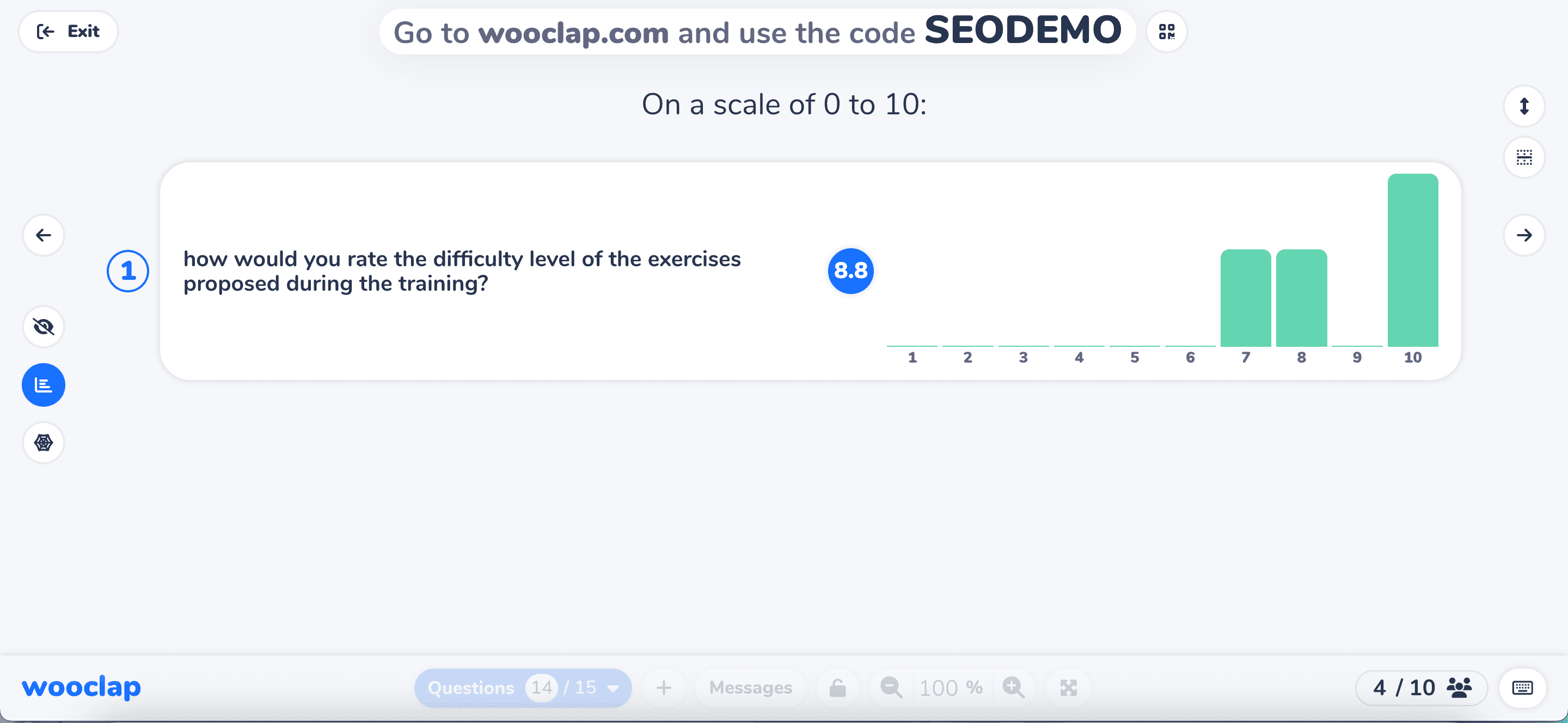
American summer tour! Wooclap will be at InstructureCon 2025
Come say hi at booth 41 from July 22nd to July 24th in Spokane, Washington
33 examples of post training survey questions
03.01.2025 • 4 minutes

Training employees is a real investment for companies. If carried out correctly, it guarantees the continuous improvement of the skills of participants who attend –which in turn helps the company improve too. For the company, it is essential to make sure this investment is worthy of its name and brings results.
There’s only one way to measure the efficiency of a training session: a post training survey. And it’s not just about asking a few random questions to your employees! The right post training survey questions will allow you to collect valuable data, insights and feedback for the future.
We have made a list of 33 post training survey questions for employees to help you build your own survey in no time.
Why is it important to have a post training survey?
After a training session, the post training survey is a compulsory step, because:
- It allows you to improve your training thanks to feedback provided by participants (employees can rate the different aspects of the training session);
- It allows you to assess how much participants remember and what areas you might need to insist on (this could help you revisit your content, as well as your presentation material and tools);
- It proves that your company values participants’ opinions and feelings (and their overall experience within the company).
For all these reasons, it is important to choose your post training survey questions carefully.
You should identify the goals of your survey in advance, by asking yourself what kind of information you’re looking for. Once you’ve defined your goals, you’ll be able to ask relevant questions and collect vital data from your learners.

Measuring satisfaction: sample post training survey questions
- What were your expectations for this training session?
- On a scale of 0 to 10, to what extent did the training session meet your expectations?
- On a scale of 0 to 10, how would you rate your overall experience?
- On a scale of 0 to 10, how would you rate how the training session was conducted?
- Would you be willing to attend another training in the future? Yes/No
- Would you recommend this training to others? Yes/No
- On a scale of 0 to 10, how did you enjoy the topic/content of the training?
- On a scale of 0 to 10, how did you like the platform used for the training?
- On a scale of 0 to 10, did you enjoy your interactions with the instructor/instructors?
When you decide not to use open-ended questions on topics as important as student satisfaction, you can still include an option that allows them to elaborate on their point of view. This gives the respondent the opportunity to be more specific, by further explaining their answer and providing more detailed information.

Questions to measure training efficiency
- How much new knowledge did you acquire thanks to the training session?
- On a scale of 0 to 10, to what extent will the topics/content covered during the training be useful to you on a daily basis?
- Did the format (material, tools, evaluation, etc.) seem appropriate for the topics covered? Yes/No
- How did you find the pace of the training: too slow, slightly slow, perfect, slightly too fast, impossible to follow?
- Was the structure of the training clear? Yes/No
- Are there any aspects of the training that remain unclear to you? Yes/No. If so, which ones?
- How satisfied are you with the instructor’s/instructors' teaching methods? 100%, 75%, 50%, 25%, 0%
- Were the instructors/ Was the instructor able to answer all your questions correctly? Yes/No.

Post training survey questions: examples of questions to improve future trainings
- What aspects do you think need improvement? How would you suggest addressing them?
- Were there any topics that were not covered but that you would have liked to work on?
- On a scale of 0 to 10, how satisfied are you with the instructor’s/instructors' approach?
- Training materials were suitable for its content. You: Strongly agree, Somewhat agree, Somewhat disagree, Strongly disagree.
- Were you surprised at any time during the training session? Yes/No
- If yes, was it a good or bad surprise? Please tell us why;
- Is there a topic covered during the training that you would like to explore further? Yes/No. If yes, which one?
- On a scale of 0 to 10, how would you rate the difficulty level of the exercises proposed during the training?
- If you had to choose one key element from the training, what would it be?
- In your opinion, what was the least useful element addressed during the training session?
- Did you find the duration of the training: too short, short, perfect, long, too long?
- What did you appreciate the most about the training?
- What did you appreciate the least about the training?
- In your opinion, what could improve the training conditions?
- Do you prefer face-to-face training or online training?
- Did you find the training monotonous? Yes/No
- The activities proposed to me were varied: Strongly agree, Somewhat agree, Neutral, Somewhat disagree, Strongly disagree.

Top question formats for a post training survey
Depending on the information you seek to obtain, you’ll need to opt for specific question formats:
- Open-ended questions in an interactive survey will help you easily collect the respondent’s general opinion;
- If you need facts, yes/no questions are more appropriate;
- Likert scale questions (very satisfied, quite satisfied, etc.) are a better choice if you seek more nuanced responses, and want to know the average satisfaction rating of the training session.
Best practices to remember
Here are a few principles to bear in mind when creating your post training survey:
- Know in advance what information you are looking for so you can write the right questions;
- Use a suitable survey tool to make the survey more engaging (and access a post training survey questions template);
- The post training survey should be short and to the point: respondents shouldn’t feel it’s a waste of time;
- Obviously, survey questions must be well-written and easy to understand: no spelling mistakes or confusing statements;
- Remember to vary the question formats to make the survey more enjoyable to complete. You can also choose to include some fun survey questions to make the overall survey experience more pleasant.
Writer

The Wooclap team
Make learning awesome & effective
A monthly summary of our product updates and our latest published content, directly in your inbox.



